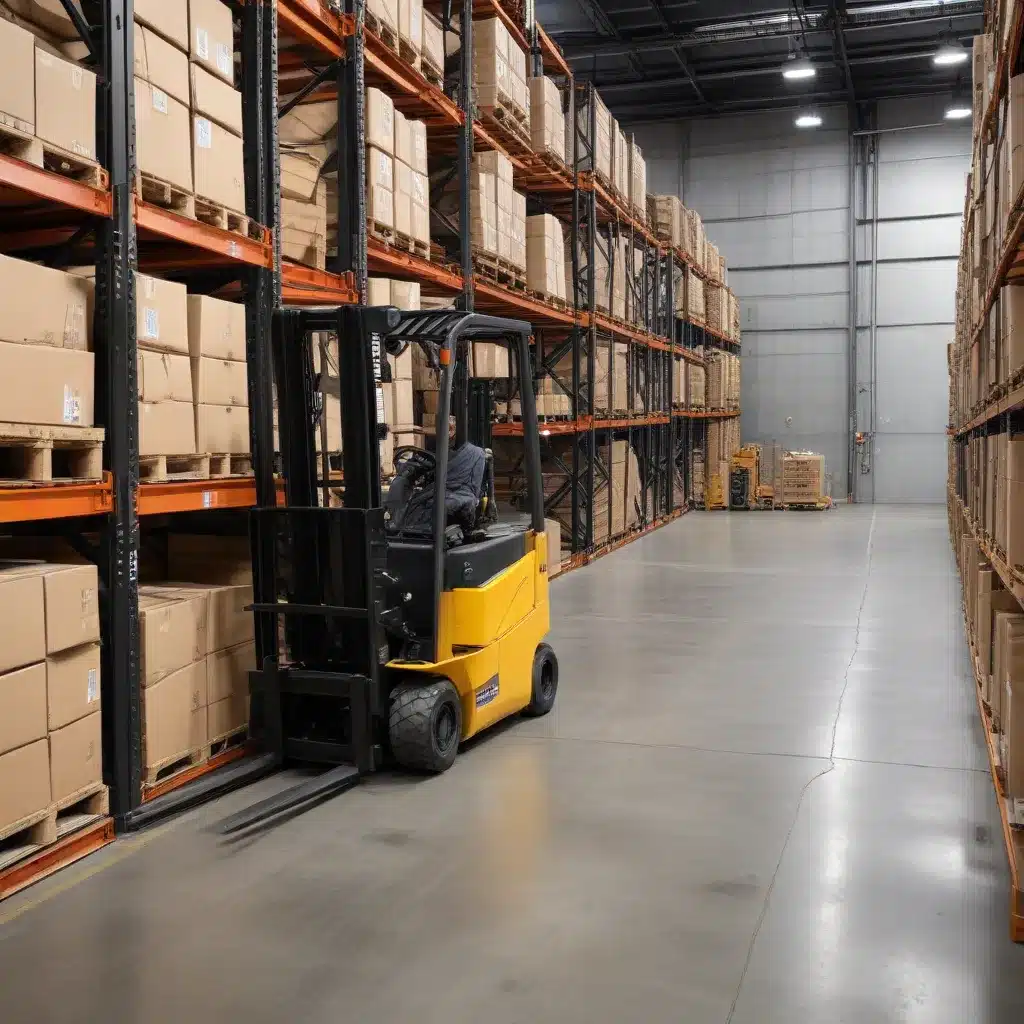
The Rise of Autonomous Forklift Technology
As the material handling industry continues to evolve, the integration of autonomous forklift technology has emerged as a game-changing advancement that is revolutionizing warehouse and logistics operations. These intelligent, self-driving forklifts are designed to enhance efficiency, improve safety, and reduce the physical demands on operators, ushering in a new era of streamlined material handling.
Enhancing Efficiency Through Automation
One of the primary benefits of autonomous forklift technology is the significant boost in operational efficiency it provides. By removing the need for human operators, these intelligent machines can work tirelessly around the clock, with precise and consistent movements. Autonomous forklifts can navigate complex warehouse environments, locate and retrieve items, and transport loads with remarkable speed and accuracy, all while adhering to safety protocols.
The automation of forklift operations also eliminates the inefficiencies associated with human error and fatigue. Autonomous forklifts are programmed to follow predetermined routes, respond to environmental changes, and execute tasks with unwavering precision, optimizing the flow of materials and minimizing downtime. This translates to faster order fulfillment, increased productivity, and enhanced overall warehouse throughput.
Improving Safety and Reducing Operator Fatigue
Autonomous forklift technology not only boosts efficiency but also significantly enhances safety in the workplace. These advanced machines are equipped with an array of sensors, cameras, and collision avoidance systems that enable them to navigate their surroundings, detect potential hazards, and react accordingly to prevent accidents. By removing the human element from the operation, autonomous forklifts eliminate the risks associated with operator error, such as improper load handling, reckless driving, or inattention.
Furthermore, autonomous forklift technology helps to alleviate the physical strain and fatigue experienced by human operators. Traditionally, forklift operation can be a physically demanding task, requiring constant vigilance, precise maneuvering, and repetitive movements. Autonomous forklifts, on the other hand, can operate tirelessly without the need for breaks or rest, reducing the burden on employees and minimizing the risk of work-related injuries.
Seamless Integration and Customization
Integrating autonomous forklift technology into existing warehouse and logistics operations requires a carefully planned approach. Manufacturers, such as Forklift Reviews, have developed seamless and scalable solutions that can be tailored to the unique requirements of each facility. These autonomous systems can be easily integrated with existing warehouse management systems, inventory tracking software, and other material handling equipment, ensuring a smooth and efficient transition.
Moreover, the customization capabilities of autonomous forklift technology allow businesses to optimize their material handling processes to suit their specific needs. Factors such as warehouse layout, load sizes, and operational workflows can be taken into account to configure the autonomous forklifts for maximum performance and efficiency.
Navigating the Transition to Autonomous Forklifts
As businesses strive to remain competitive in the ever-evolving logistics landscape, the adoption of autonomous forklift technology has become a strategic imperative. However, the transition to this innovative solution requires careful planning, employee training, and a comprehensive understanding of the technology’s capabilities and limitations.
Overcoming Resistance to Change
One of the primary challenges in implementing autonomous forklift technology is addressing the potential resistance to change among employees. Forklift operators may be apprehensive about the transition, fearing job displacement or a perceived loss of control. To mitigate this, it is crucial to involve employees in the decision-making process, provide comprehensive training, and emphasize the benefits of the technology, such as improved safety, reduced workload, and the opportunity to upskill and take on more strategic roles.
Ensuring a Smooth Transition
Successful integration of autonomous forklift technology requires a well-planned and executed transition strategy. This includes carefully mapping out the workflow and identifying the optimal deployment locations within the facility, ensuring seamless integration with existing systems and processes. It is also important to establish robust safety protocols, comprehensive training programs, and clear communication channels to ensure a smooth and efficient transition.
Leveraging Data-Driven Insights
One of the key advantages of autonomous forklift technology is the wealth of data it generates, providing valuable insights into material handling operations. By analyzing the performance data and operational metrics collected by these intelligent machines, businesses can optimize their processes, identify areas for improvement, and make data-driven decisions to enhance overall efficiency and productivity.
The Future of Forklift Automation
As the material handling industry continues to evolve, the adoption of autonomous forklift technology is poised to become increasingly widespread. With the promise of enhanced efficiency, improved safety, and reduced operator fatigue, these smart, self-driving machines are set to transform the way warehouses and logistics operations function.
Integrating with Warehouse Automation
The integration of autonomous forklift technology with other warehouse automation solutions, such as automated storage and retrieval systems (ASRS), robotic palletizers, and inventory management software, will further streamline material handling processes. This convergence of technologies will enable seamless coordination, real-time data sharing, and end-to-end optimization, driving even greater productivity and cost savings for businesses.
Advancements in Sensor and Navigation Technology
Continuous advancements in sensor technology, artificial intelligence, and machine learning are paving the way for increasingly sophisticated autonomous forklift systems. Improved perception capabilities, enhanced navigation algorithms, and advanced decision-making algorithms will enable these machines to navigate complex environments, adapt to changing conditions, and make smarter, more autonomous decisions, ultimately enhancing their overall performance and reliability.
Embracing the Future of Material Handling
As the material handling industry embraces the future of automation, the adoption of autonomous forklift technology will become a crucial differentiator for businesses seeking to gain a competitive edge. By leveraging the efficiency, safety, and data-driven insights offered by these intelligent machines, companies can streamline their operations, reduce costs, and better serve their customers in an increasingly fast-paced and demanding market.
The rise of autonomous forklift technology represents a transformative shift in the way warehouses and logistics operations are conducted. By enhancing efficiency, improving safety, and reducing operator fatigue, these advanced machines are poised to redefine the future of material handling. As businesses explore the integration of autonomous forklifts, they can expect to see a significant impact on their bottom line, while also creating a safer and more sustainable working environment for their employees.

